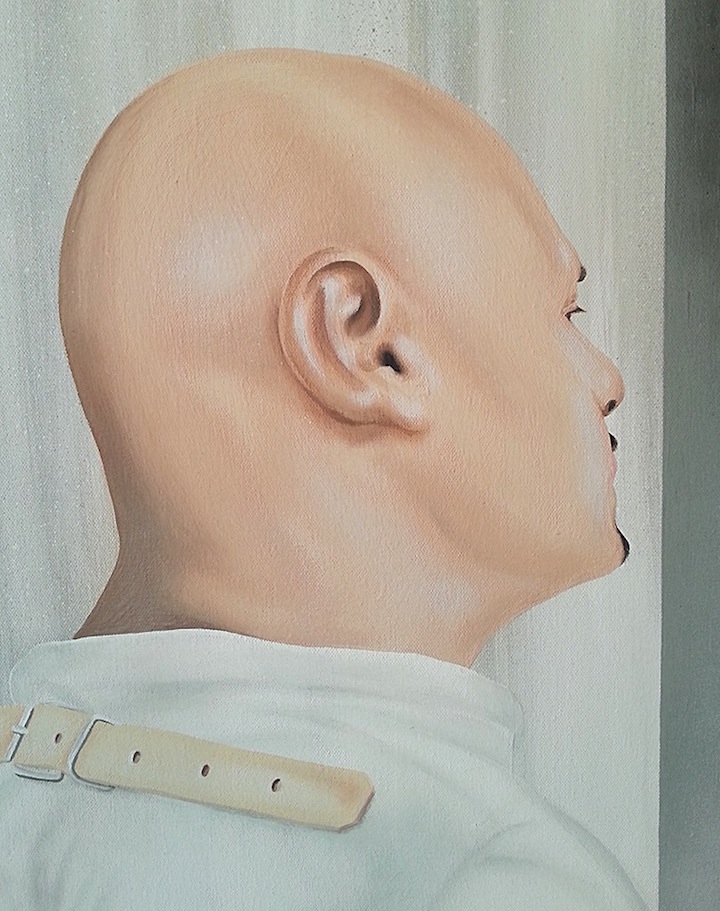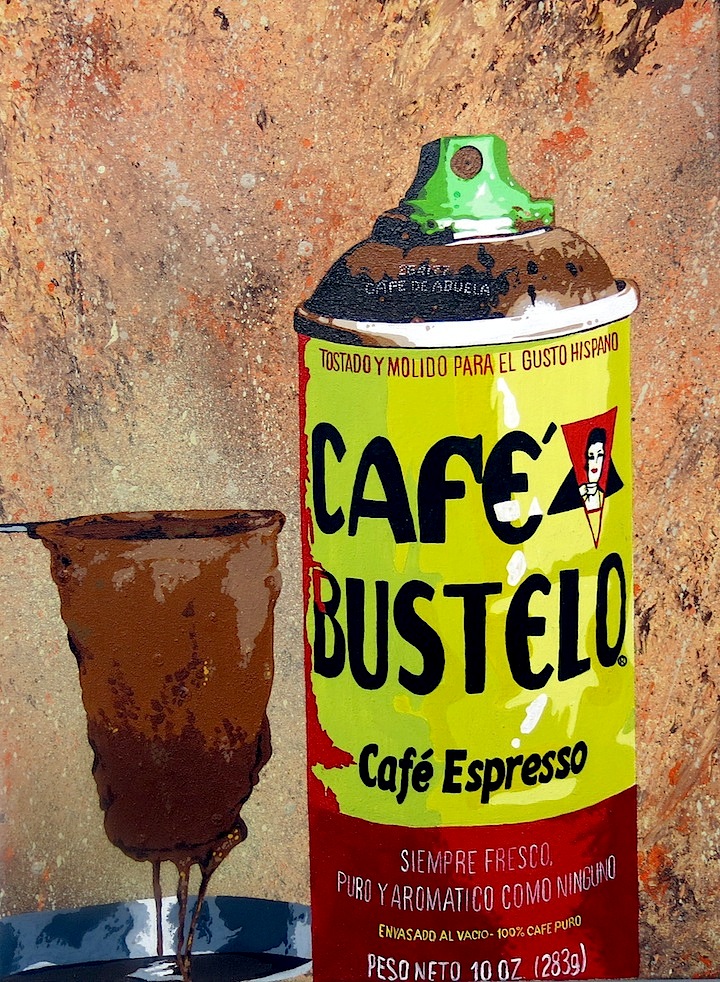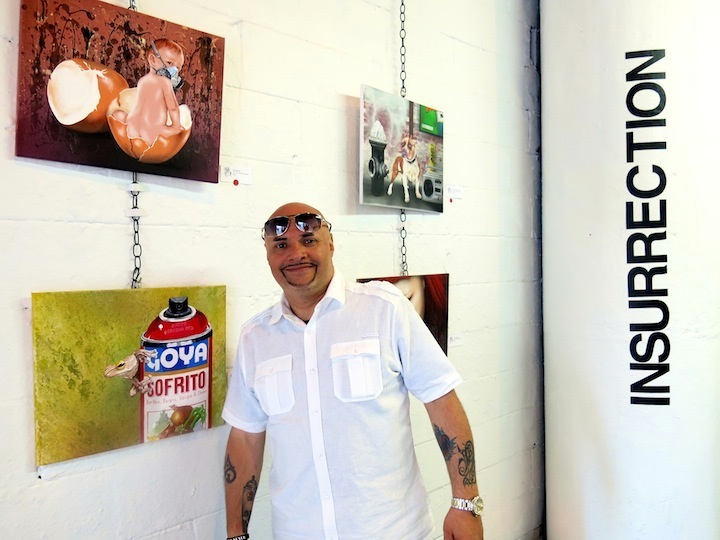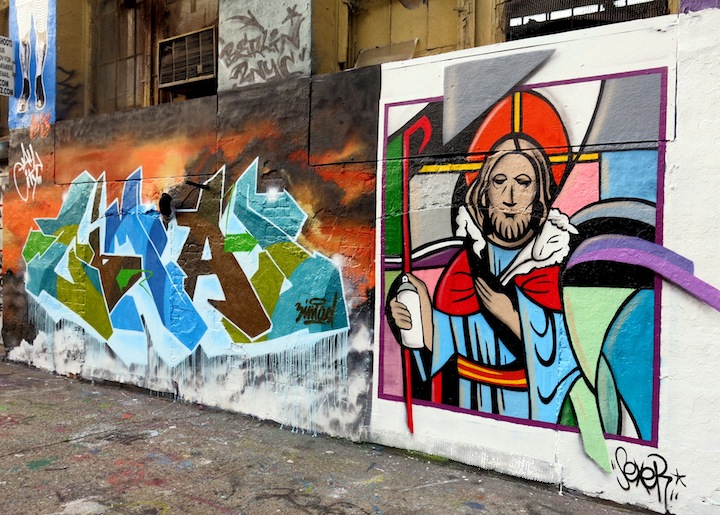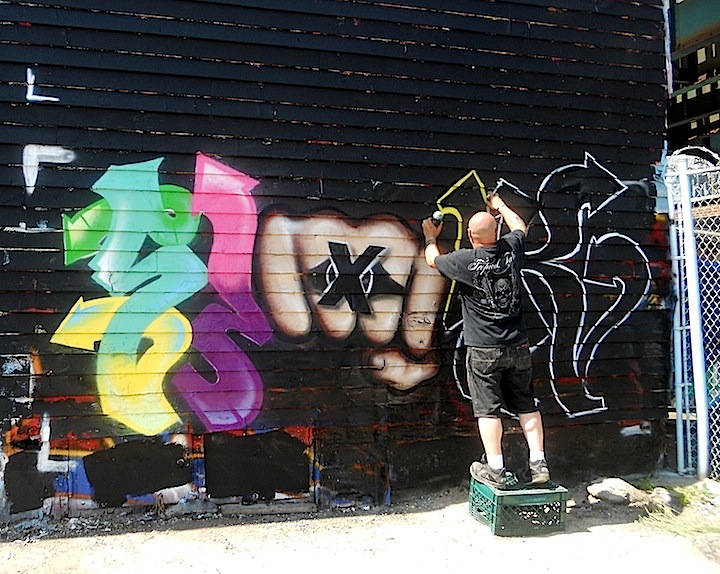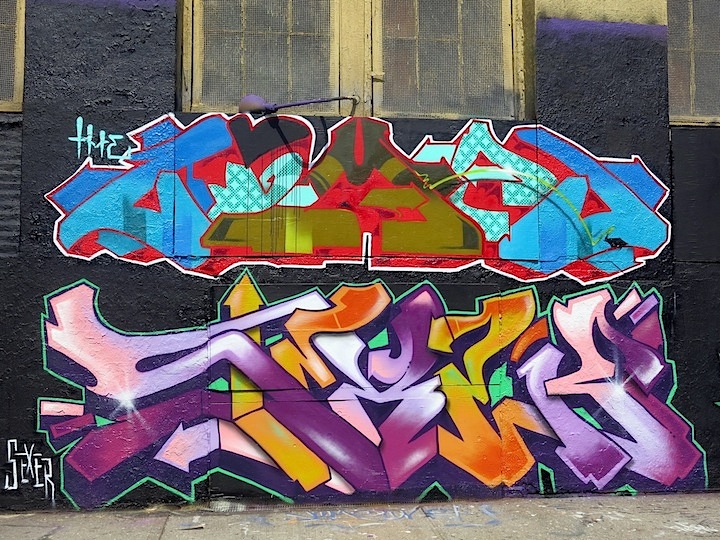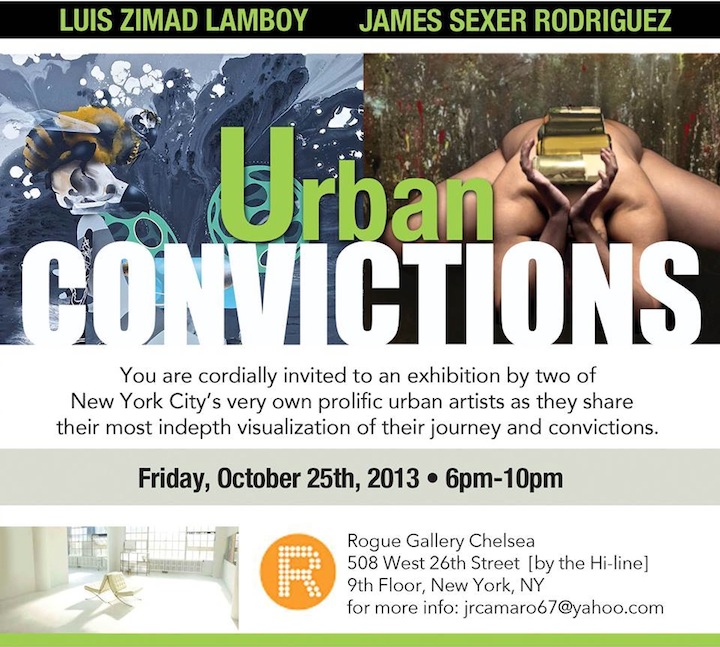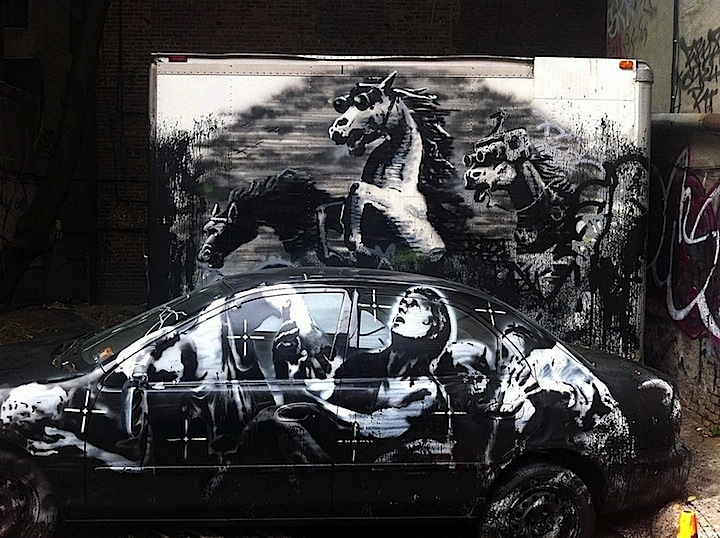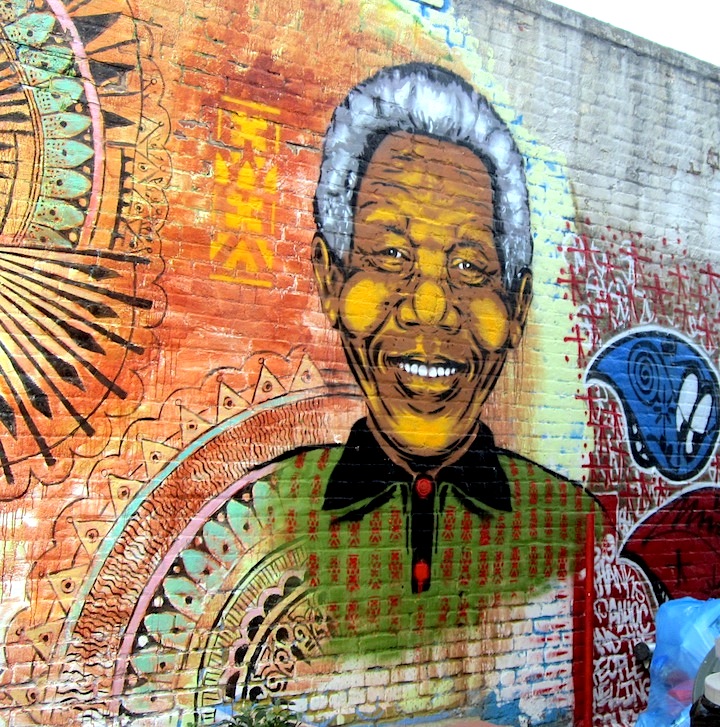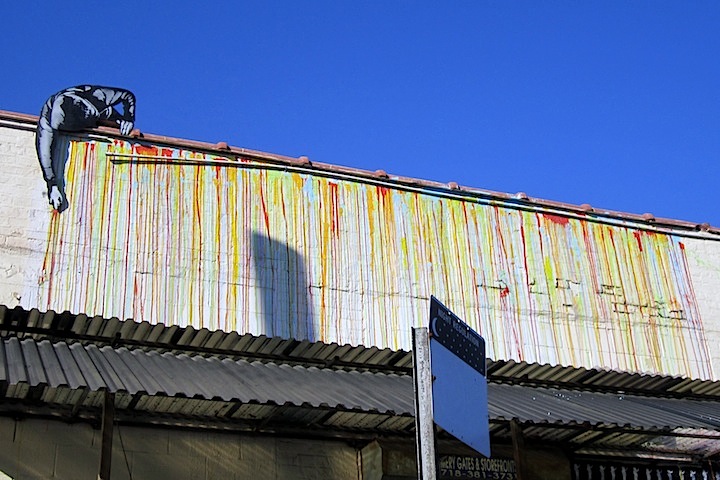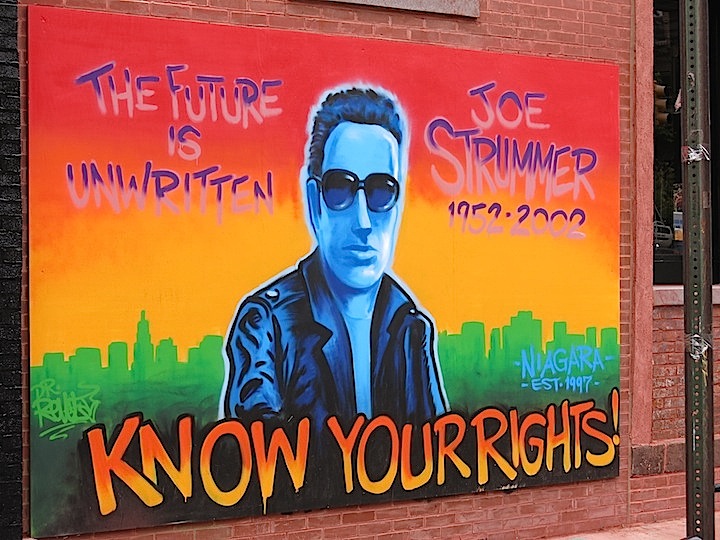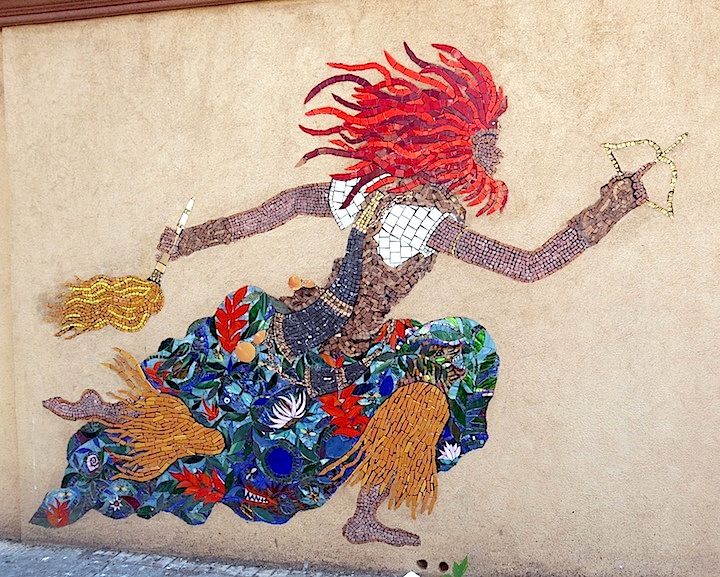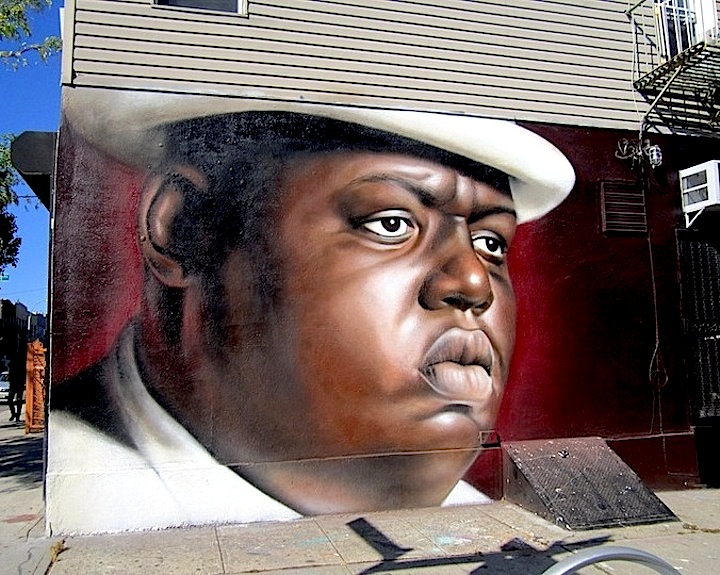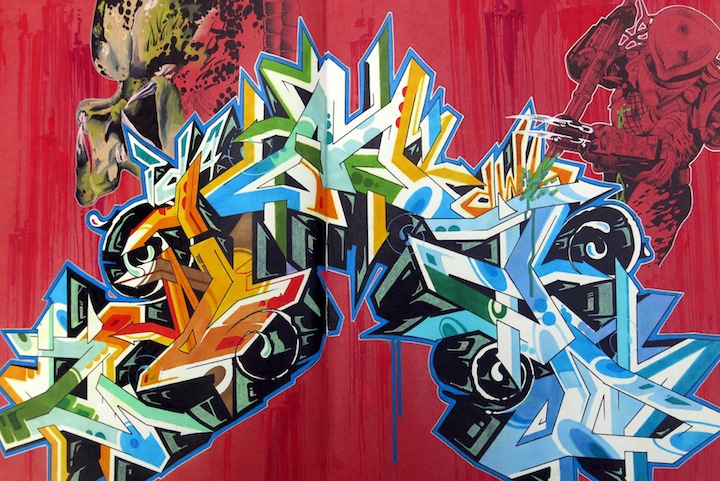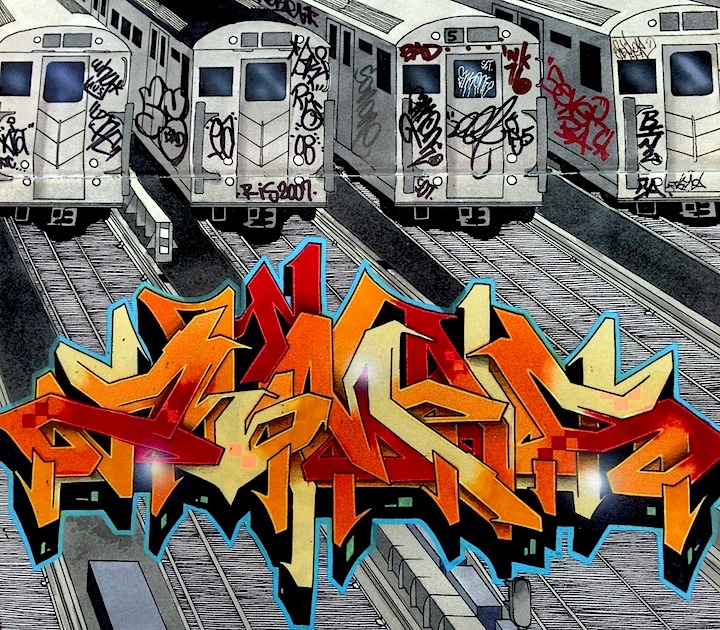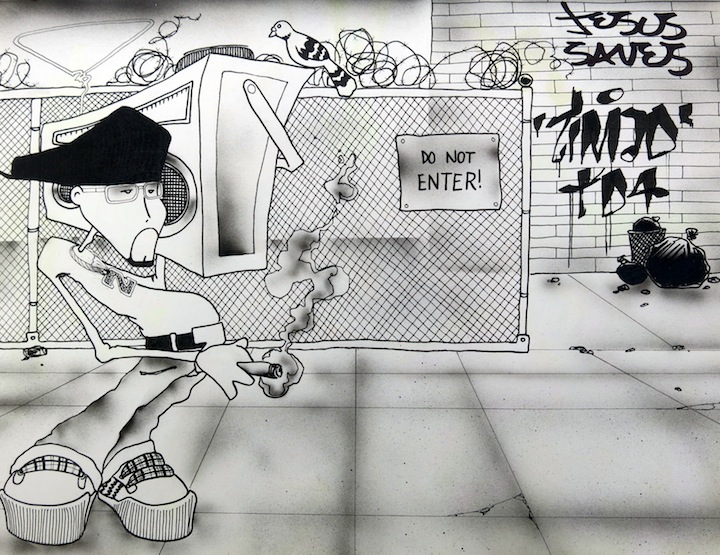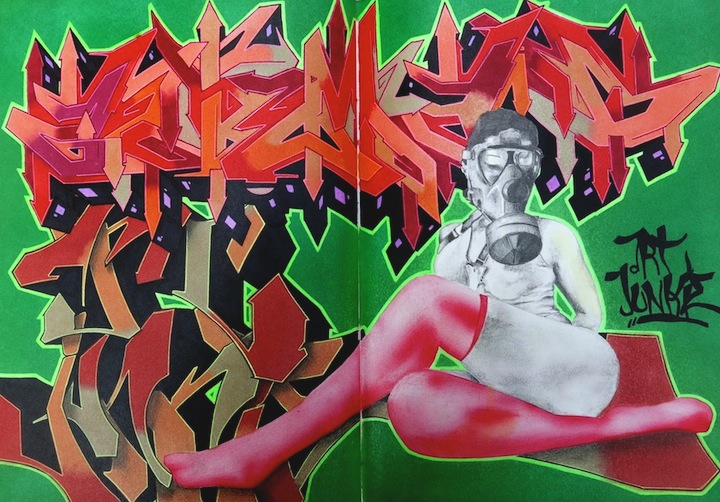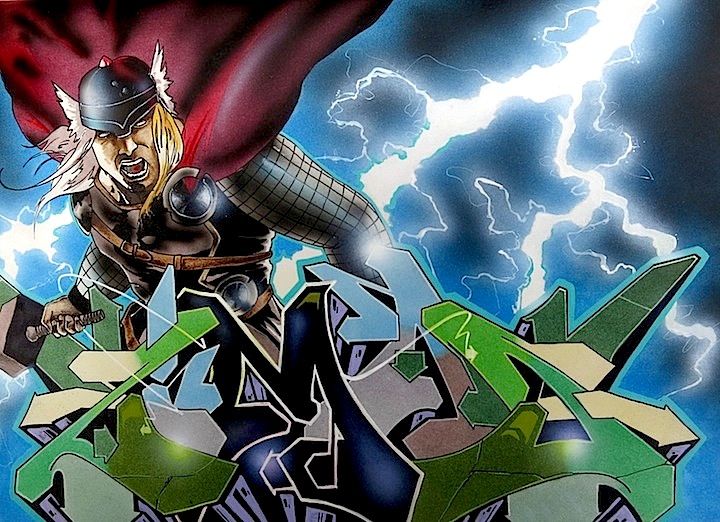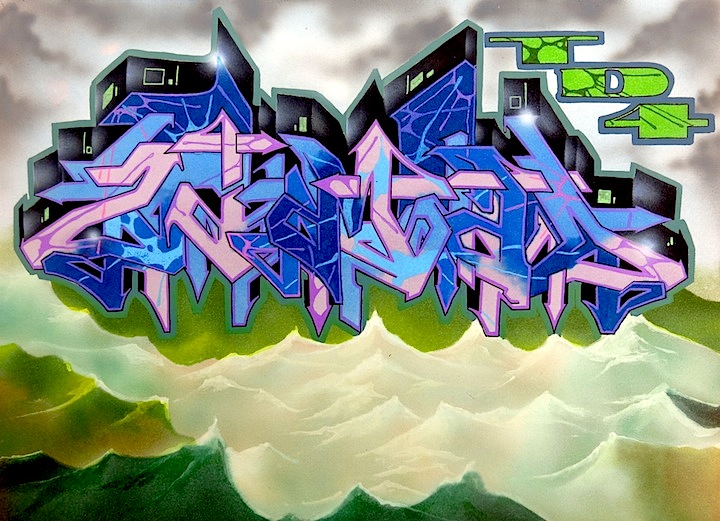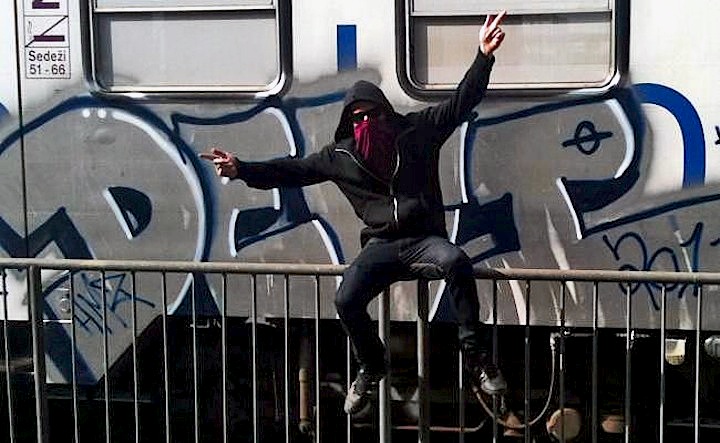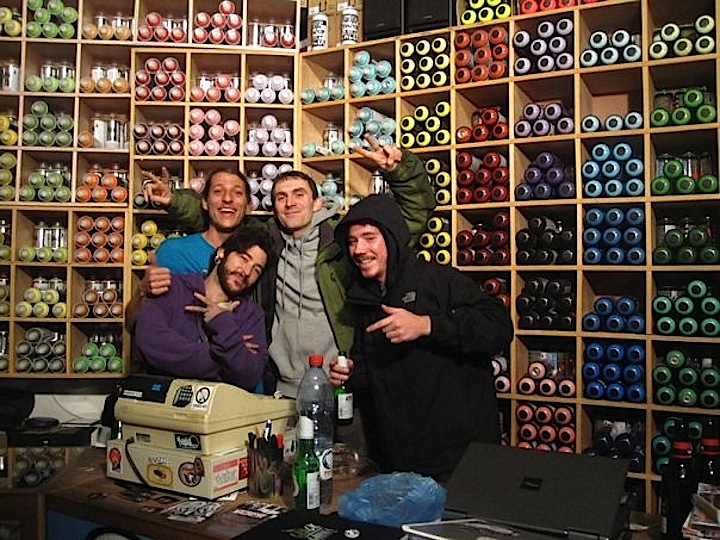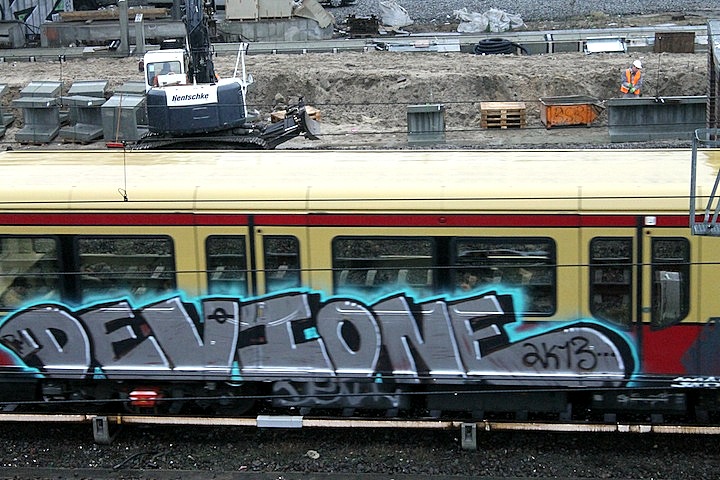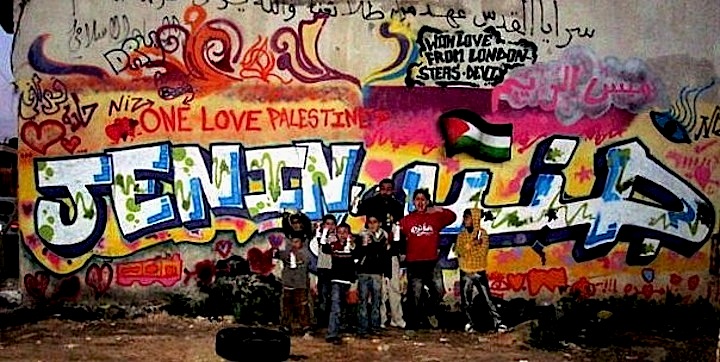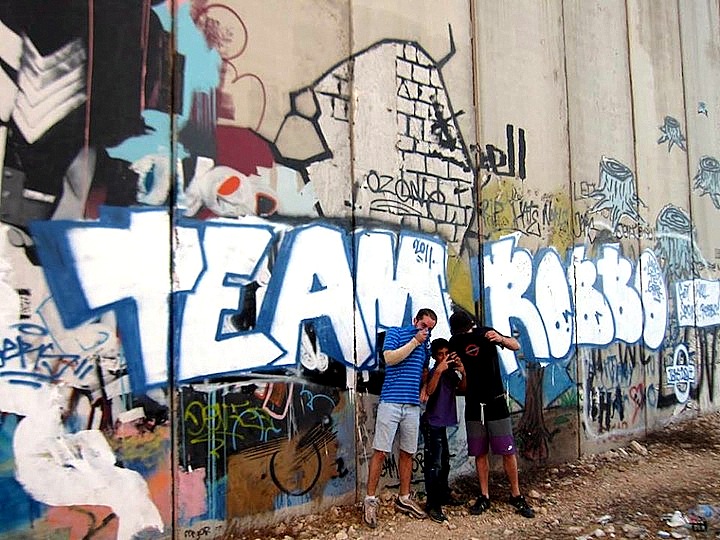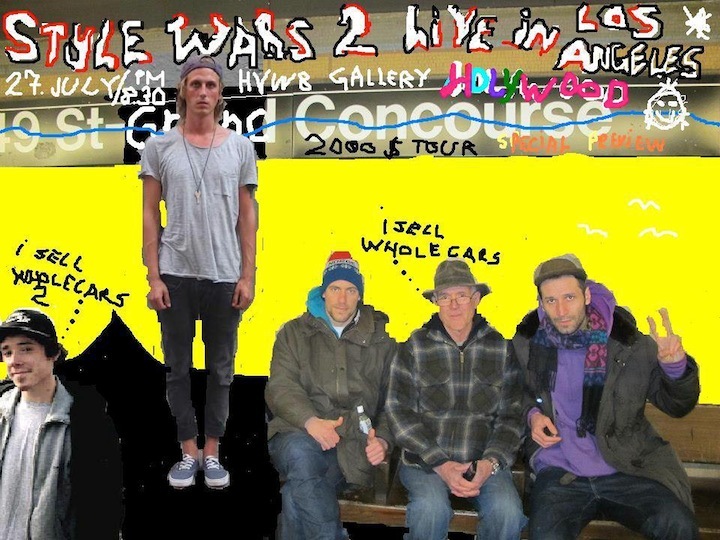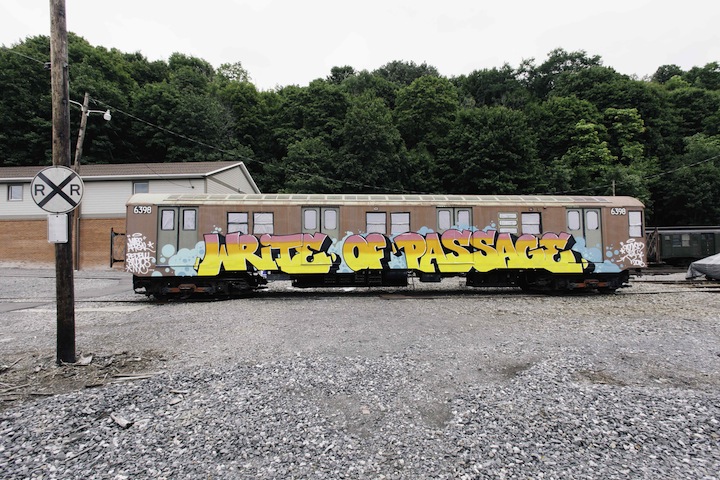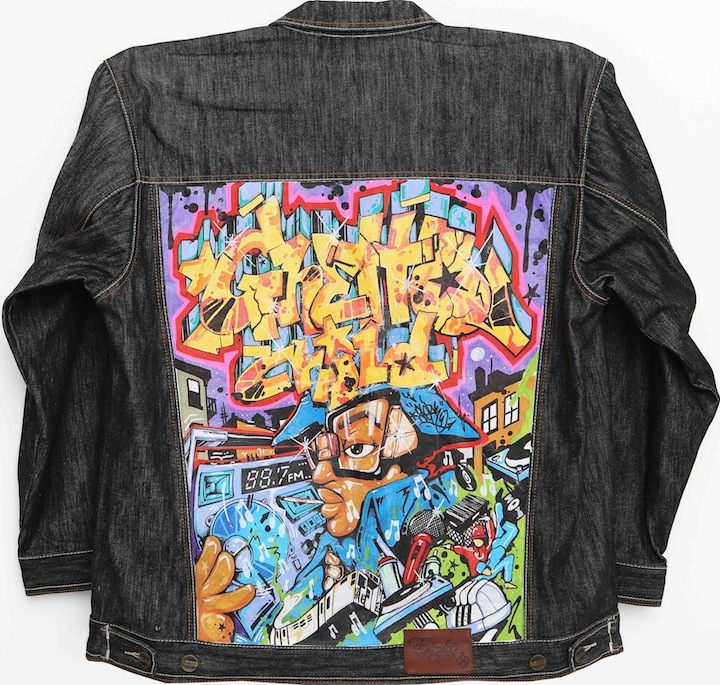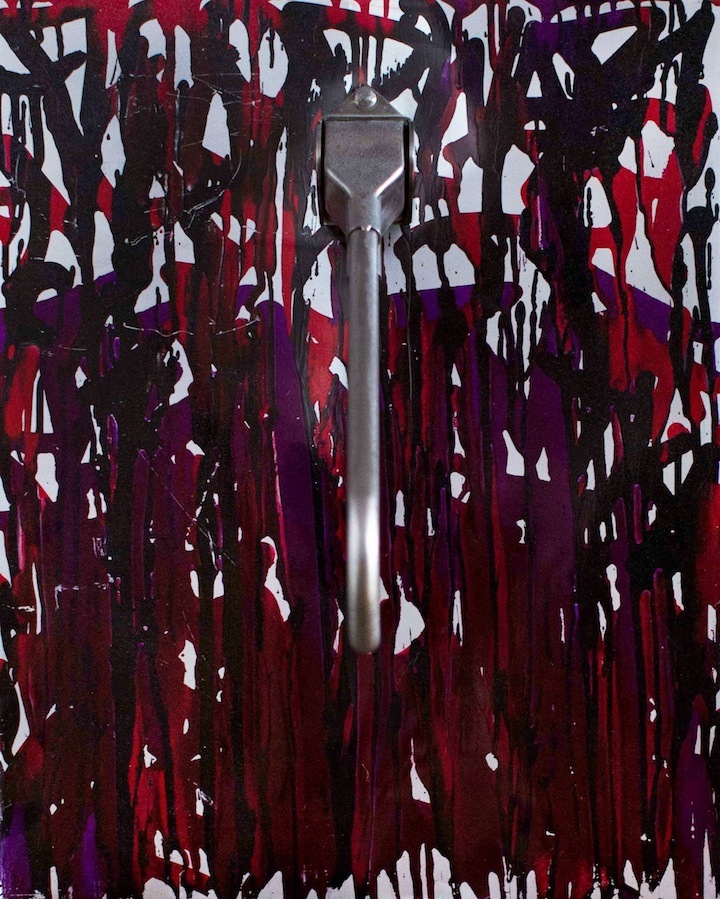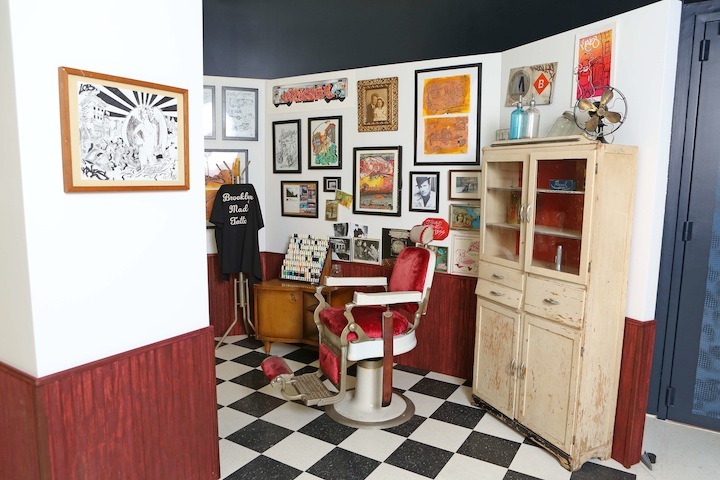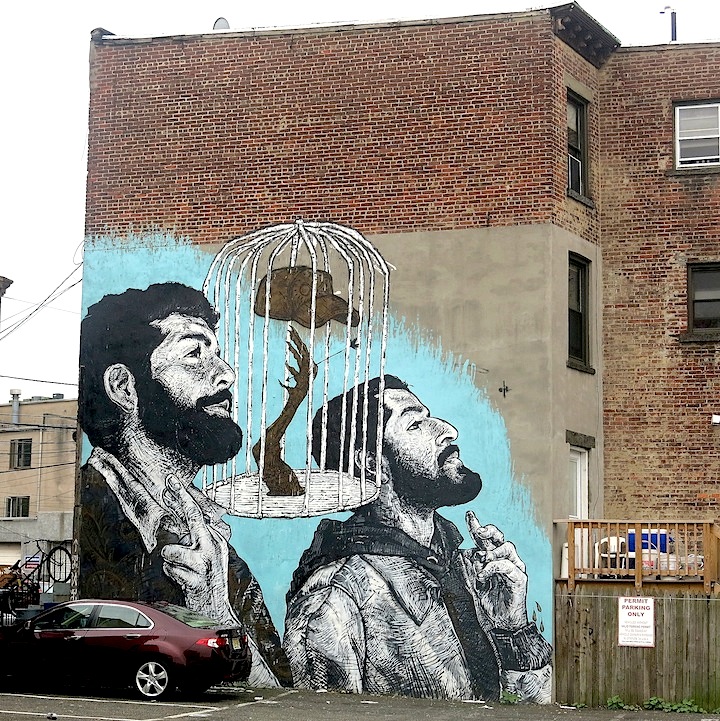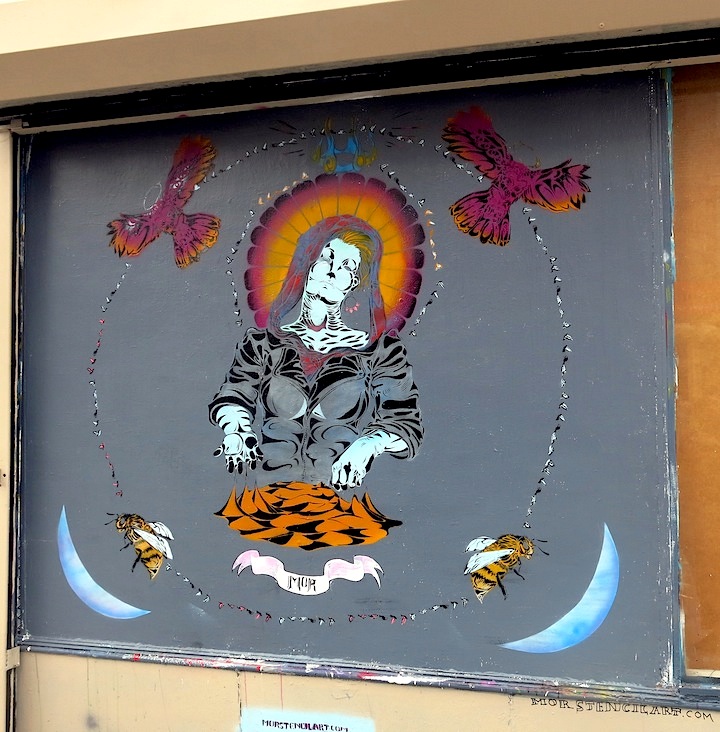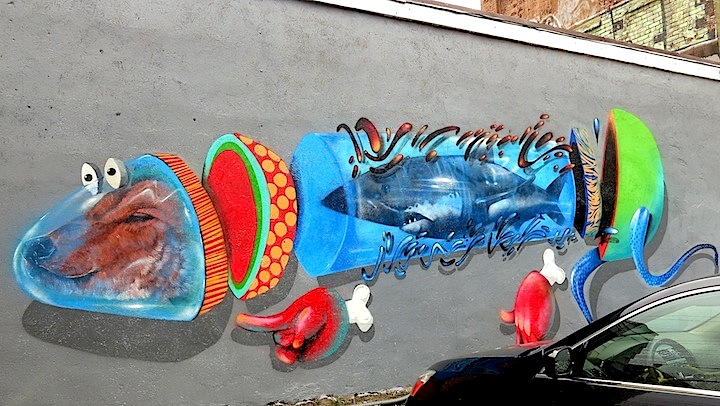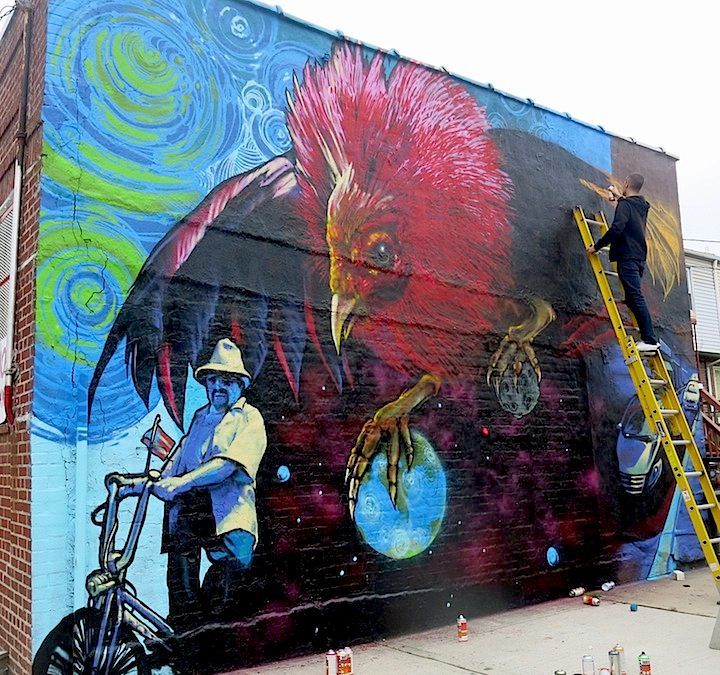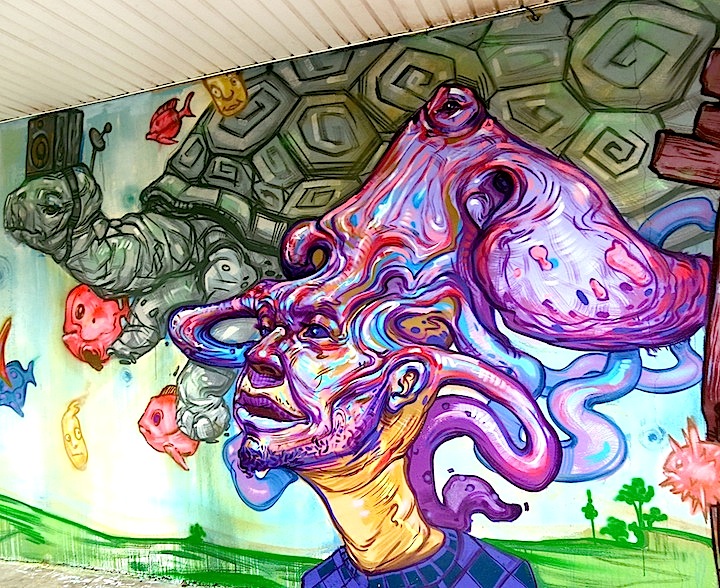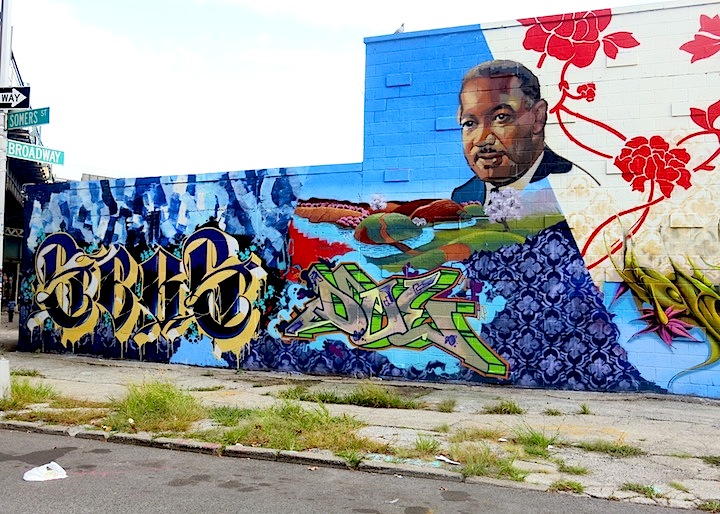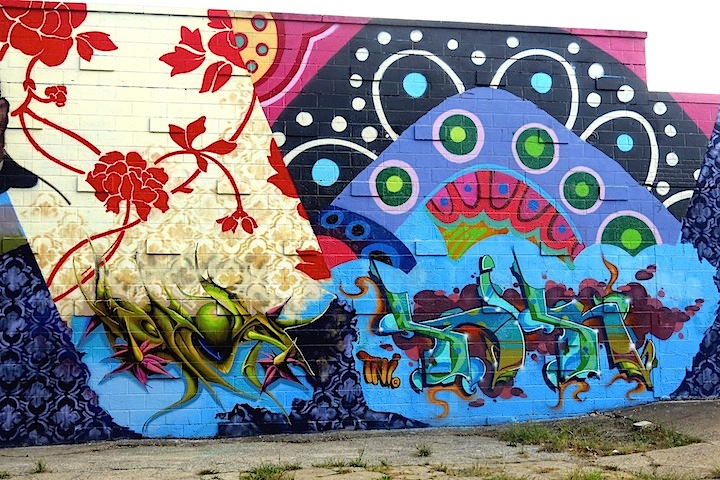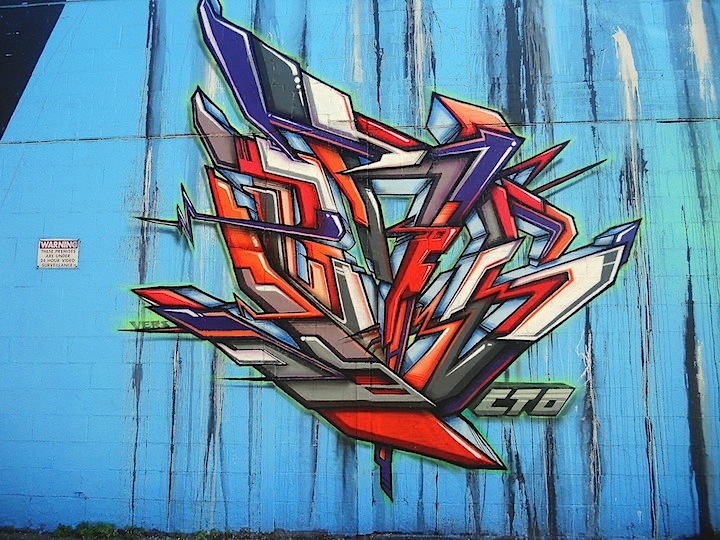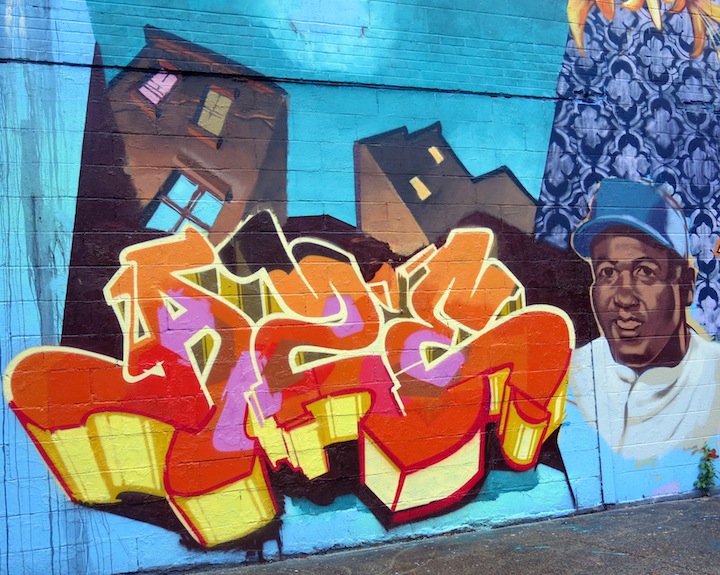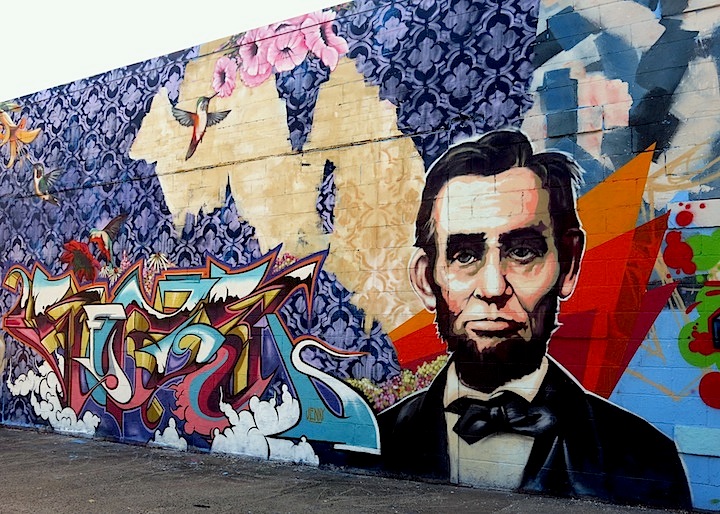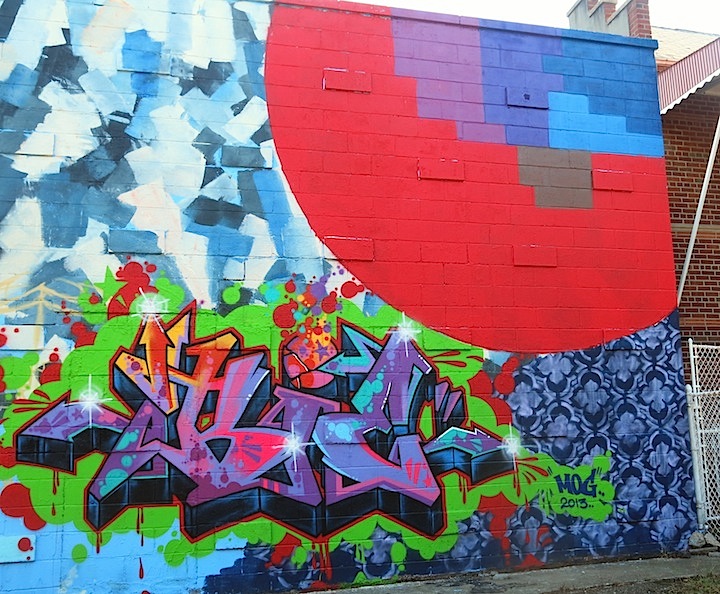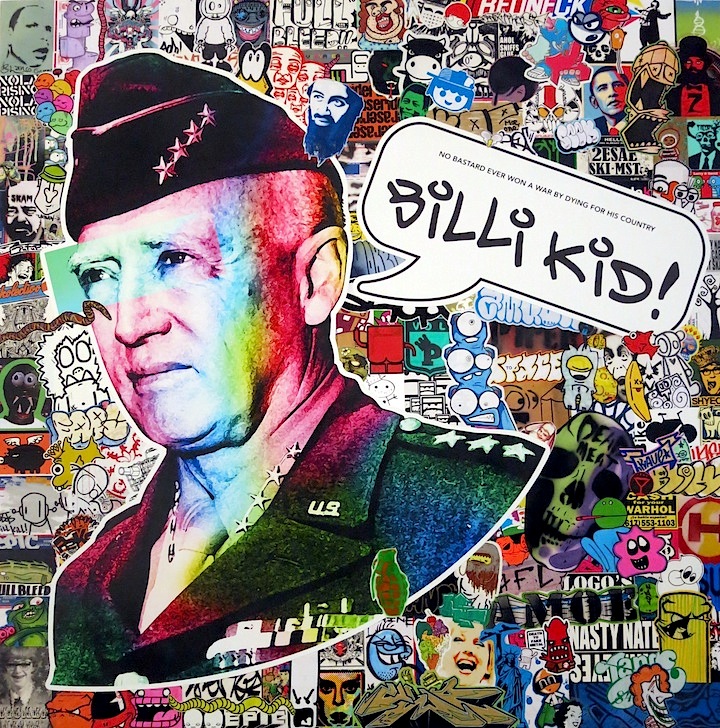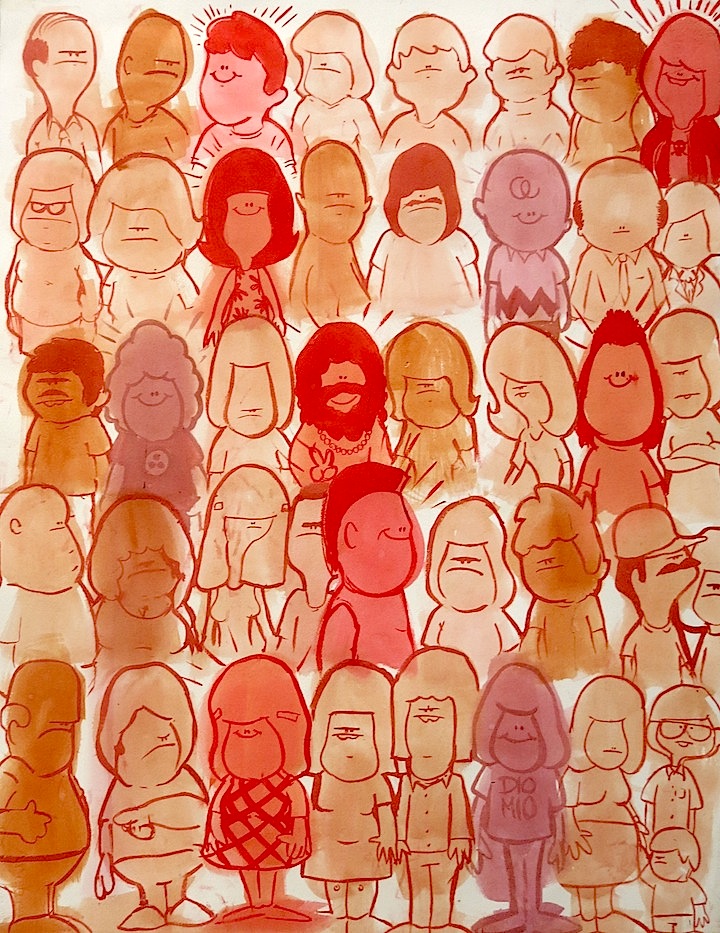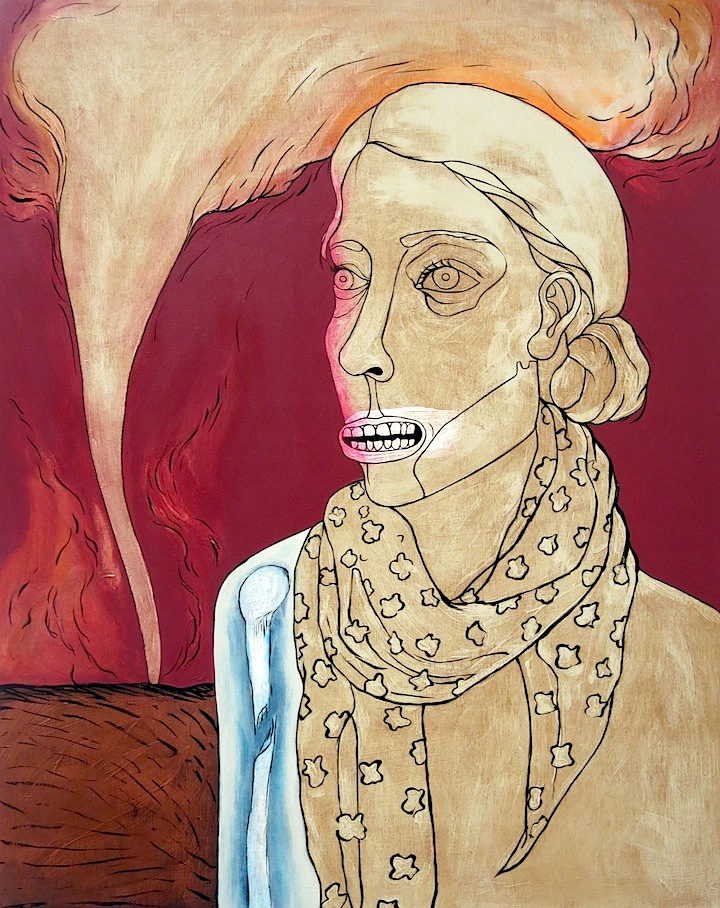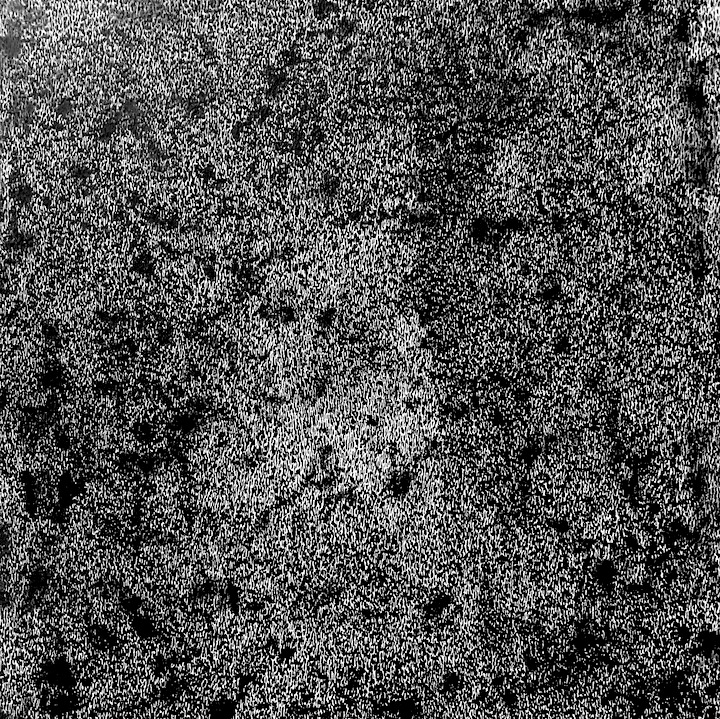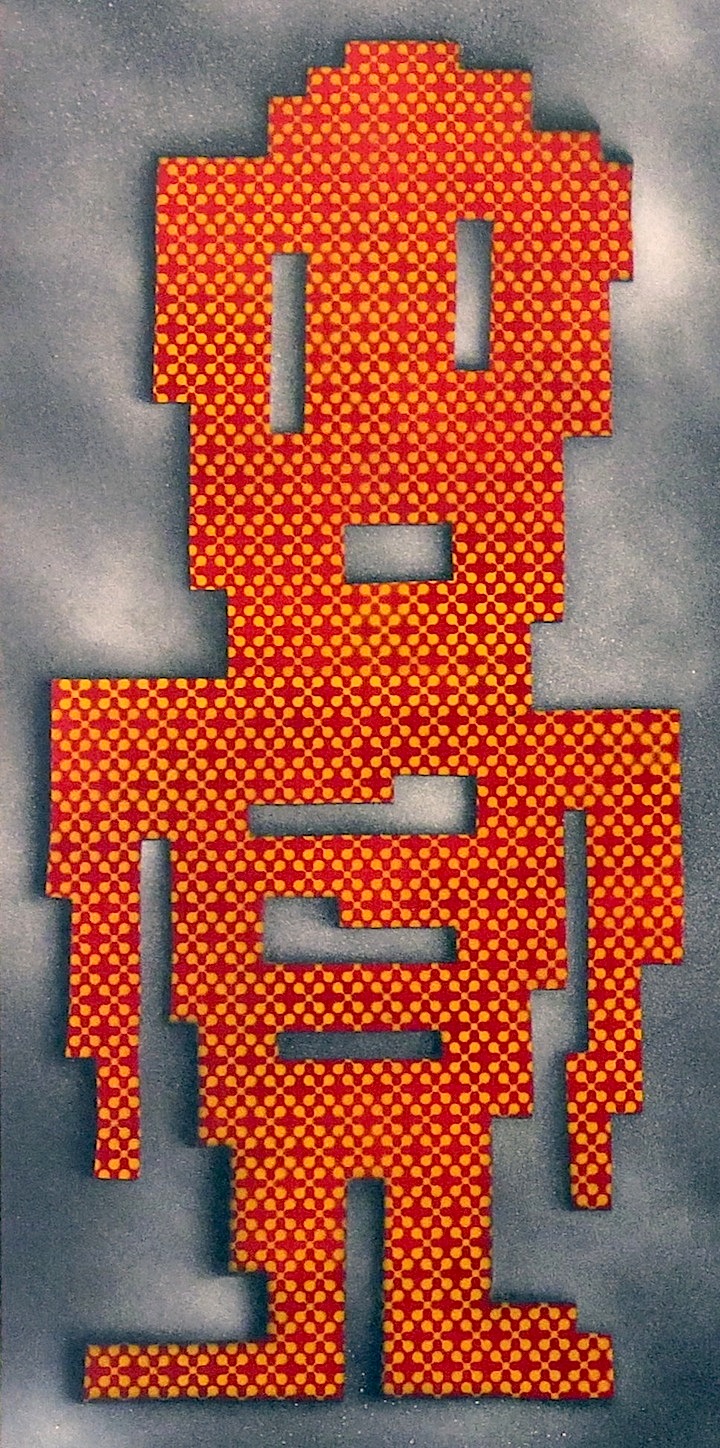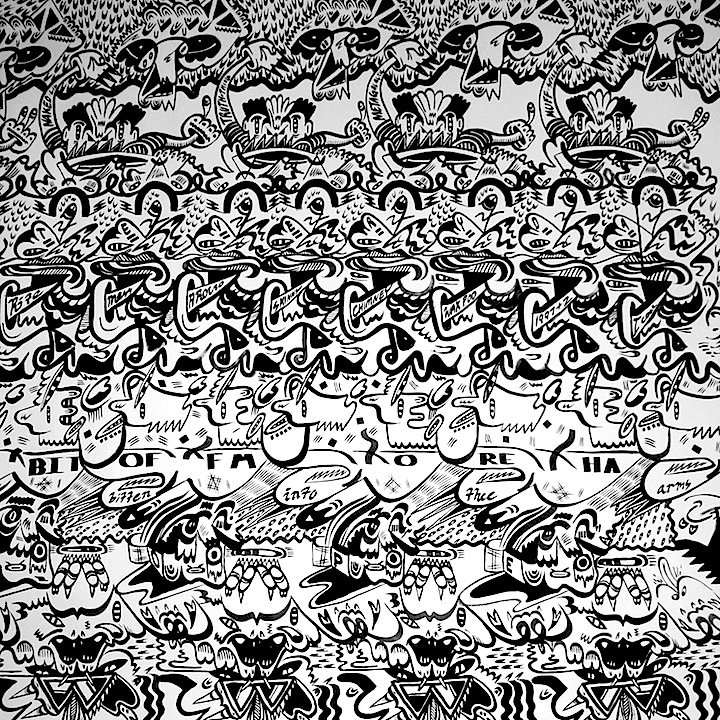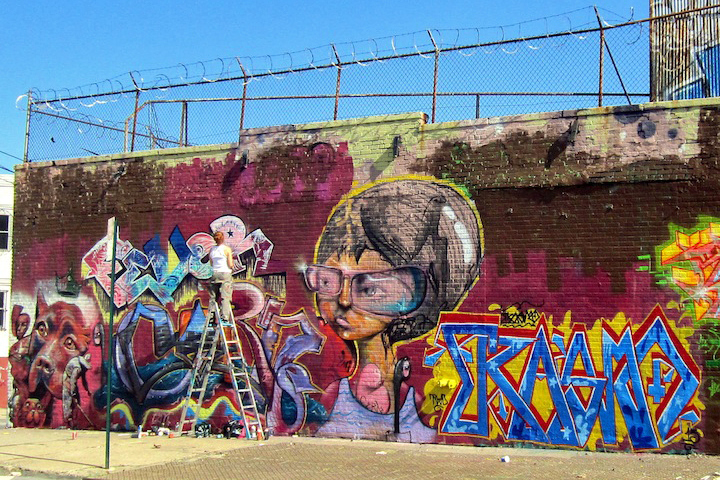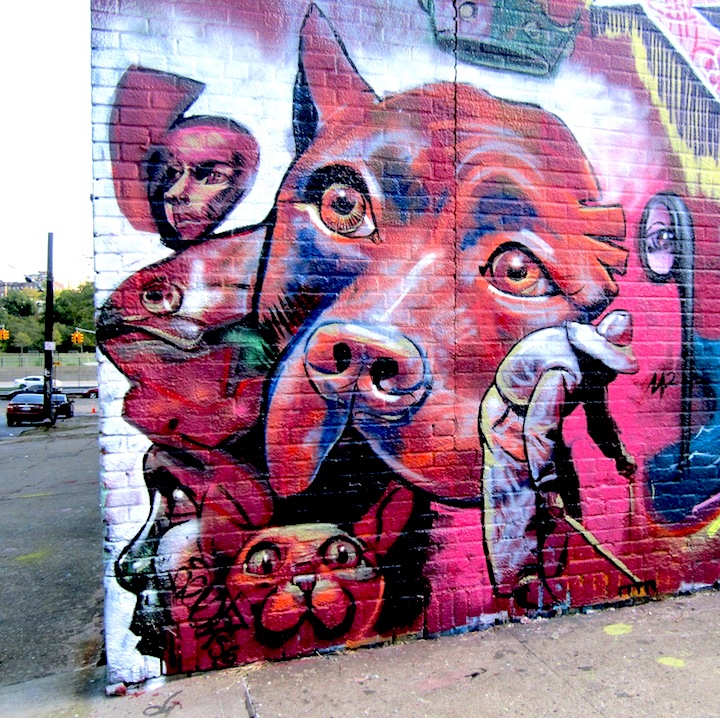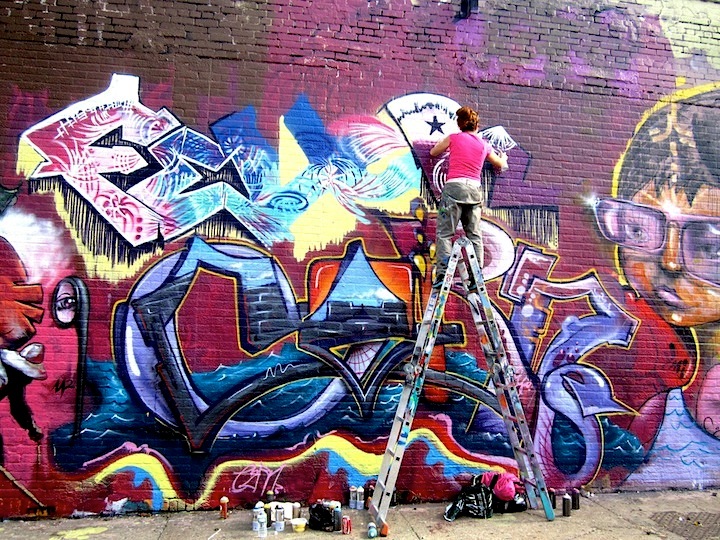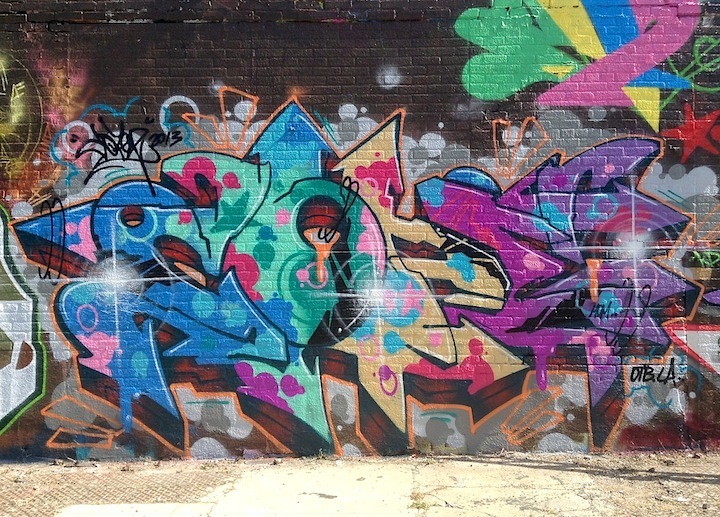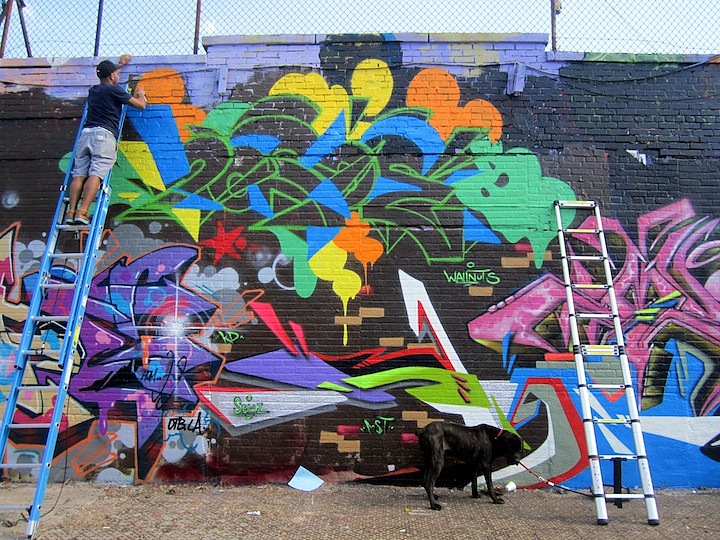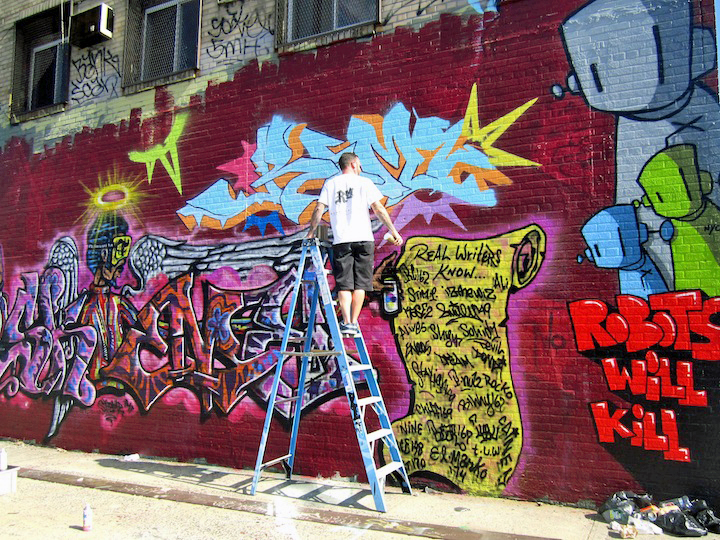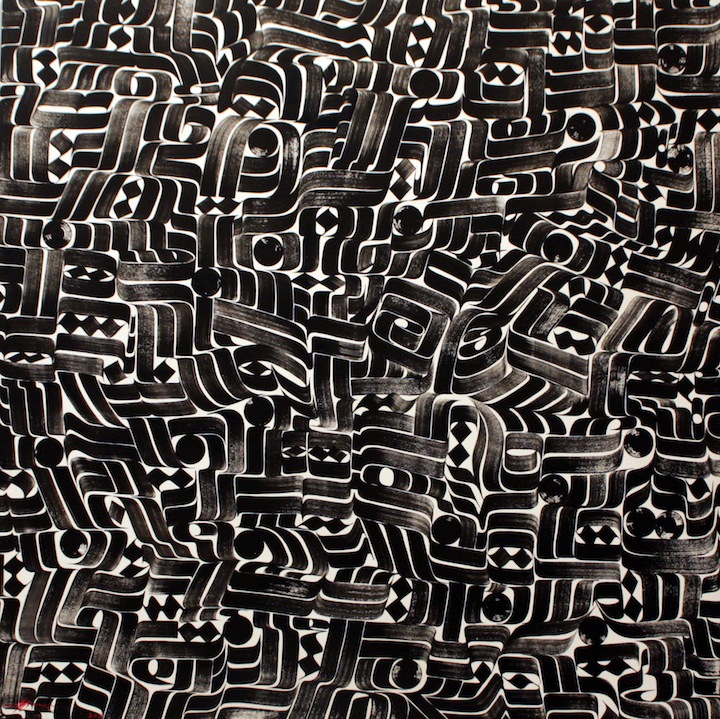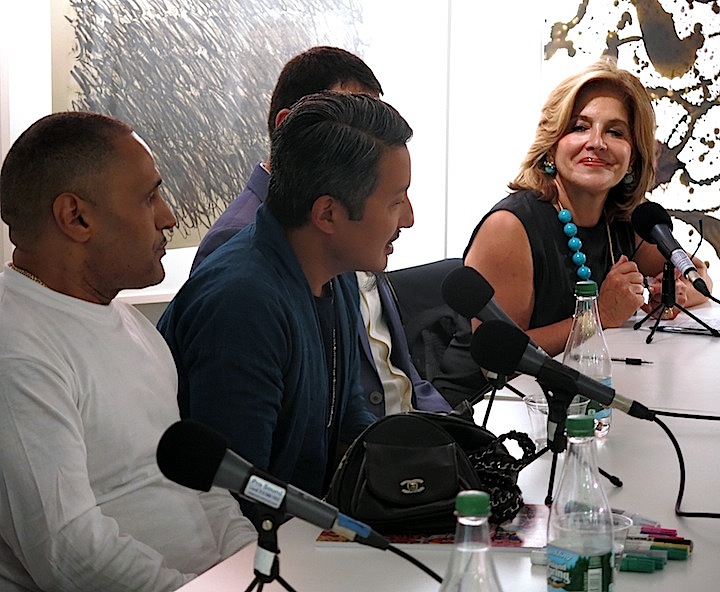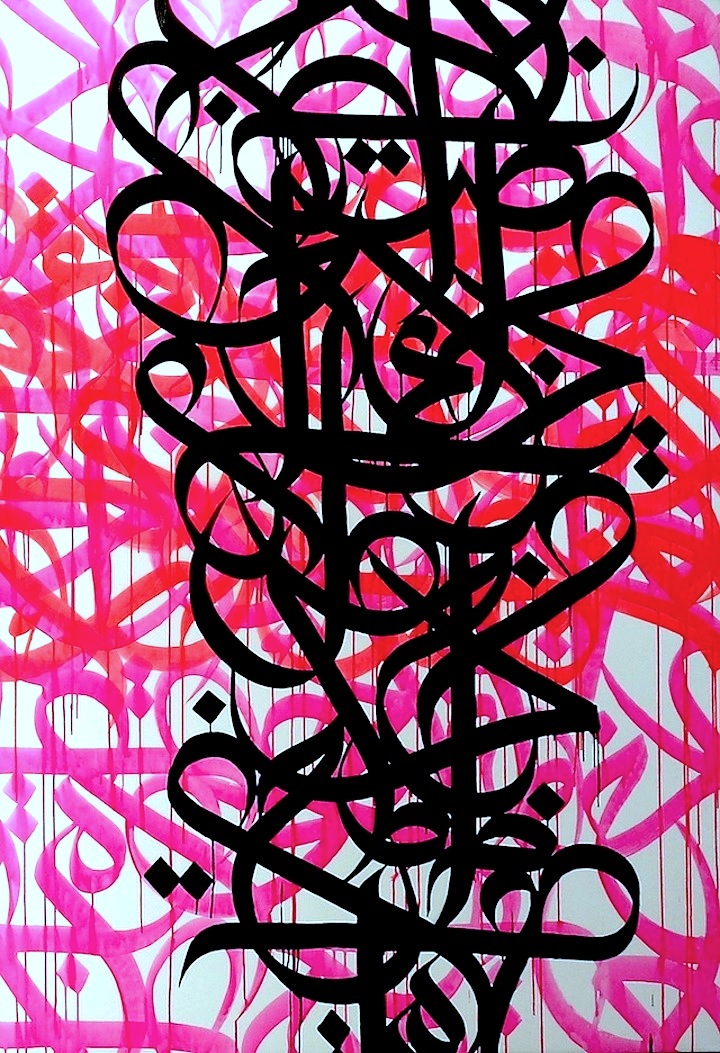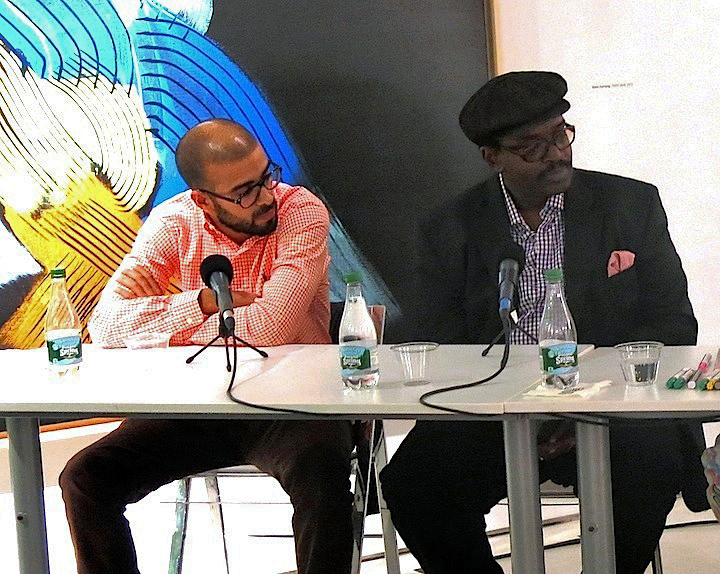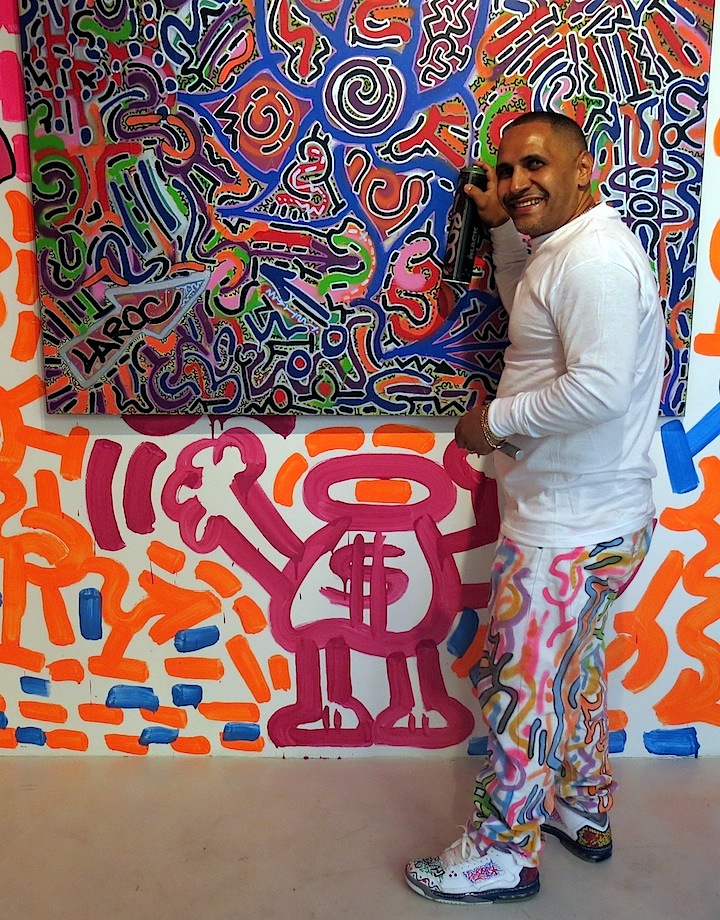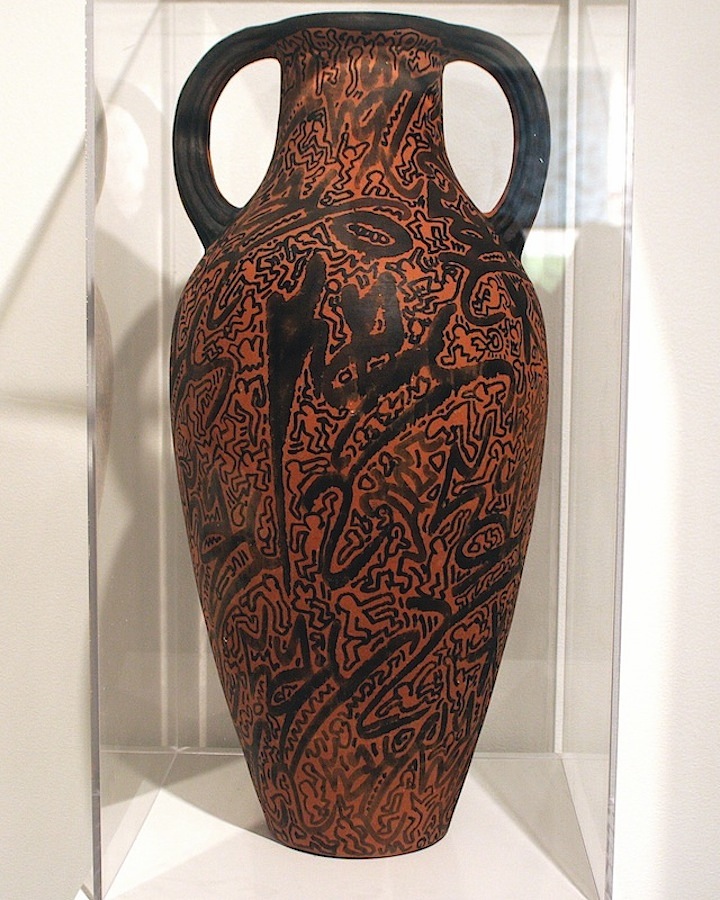Active on the streets of NYC for over 30 years, James Sexer Rodriguez has also achieved wide commercial success as a designer. His works on canvas, fusing elements of graffiti and realism, have been exhibited in galleries in NYC, the Caribbean and in Europe. His upcoming exhibit, Urban Convictions, will feature his new works — alongside new paintings by Zimad — this Friday evening at Rogue Gallery Chelsea, 508 West 26th Street.
When and where did you first get up?
I started tagging in notebooks when I was about 10. By the time I was 13, I was hitting the walls in the South Bronx with tags. And within a short span of time, the tags evolved into pieces.
What inspired you?
My ex-brother-in-law was a writer with B.A. (Bronx Artists), and my entire neighborhood was a breeding ground for writers.
Have you any early graffiti-related memories that stand out?
We used to steal ink from the supermarket and make our own markers. I remember spilling the ink all over myself, as I was getting ready to go bombing.
Did you represent any crews?
I was president of BA (Bronx Artists); other crews I represented include OTB, SYB, SSB and12 Disciples.
Have you ever been arrested?
I was caught several times, but booked only once – for a misdemeanor for public defacing. Basically, the police didn’t want to do the paper work, and so they just let me go. Things were different back in the day and they actually let us finish the pieces.
How did your mom feel about what you were doing back then?
My mom was oblivious to just how illegal graffiti was, but she always knew where I was going and what I was doing.
What is the riskiest thing you did?
Painting pieces in a tunnel with a one-inch clearance between the train and the wall.
Why were you willing to that that risk?
I wasn’t thinking! I was looking for fame. You couldn’t pay me to do it now!
Do you work with a sketch-in-hand or do you just let it flow?
About 90% of the time I work with a sketch. What I do these days is largely conceptual, and it takes planning.
Are you generally satisfied with your finished piece?
I work on it until I am satisfied with it.
Have you a formal art education?
I went to Art & Design High School, where I was around writers like Doze, Crash and Seen, Paze, Size, Ence. I also attended FIT and did some courses at Parsons.
What percentage of your time is devoted to art?
95% of it. I live off my art. My kids and my art are my life.
Are there any particular cultures that have influenced your aesthetic?
I wouldn’t say I’ve been influenced by any specific cultures. But life, itself, and growing up in the South Bronx and New York City have probably been my main aesthetic influences.
Any thoughts about the graffiti/street art divide?
I don’t like labels. I’m originally a graffiti artist, but I like street art. Street artists may use different techniques and tools, but they have given us all – including galleries — a new lease on life. Just look at all the attention Banksy and the art community have been getting since he began his residency on NYC streets!
How do you feel about that – the attention that Banksy has been getting?
It’s good. It keeps the art community healthy.
Why do you suppose the art world has been so reluctant to embrace graffiti?
Probably because of graffiti’s association with vandalism. It’s problematic to many.
Any favorite arists?
Certainly Picasso. He had so many styles and could do just about anything. Among graffiti writers, my favorites include Seen, Doze Green, Duro, Pase and Crash
How do you feel about the role of the Internet in all this?
It’s a blessing. You don’t have to have a million dollars to market yourself. The Internet has become a vital tool.
Have you any feelings about the photographers in the scene?
I am thankful for their coverage. But it’s important that they ask the artist’s permission and that they credit the artist whose work they are photographing.
What do you see as the role of the artist in society?
The artist has a responsibility to share his God-given talents with the world.
What do you see as the future of graffiti?
Graffiti is here to stay. It’s exciting and invigorating, and it is attracting an increasingly diverse following.
What about you? What’s ahead for you?
Well, after so many years of painting and striving for better and better, there’s only one direction for me: UP. I refuse to stop. I will continue to document my imagination and my emotions on whatever surface is in front of me. I love sharing my art.
Interview by Lois Stavsky; photo 1, close-up from Sexer’s new self-portrait, courtesy of the artist; photos 2 and 3, from Sexer’s solo exhibit at 5Pointz, by Dani Reyes Mozeson; photos 4 and 6, with Zimad at 5Pointz, by Lois Stavsky; photo 5, Sexer painting at 5Pointz, by Tara Murray
{ 6 comments }
